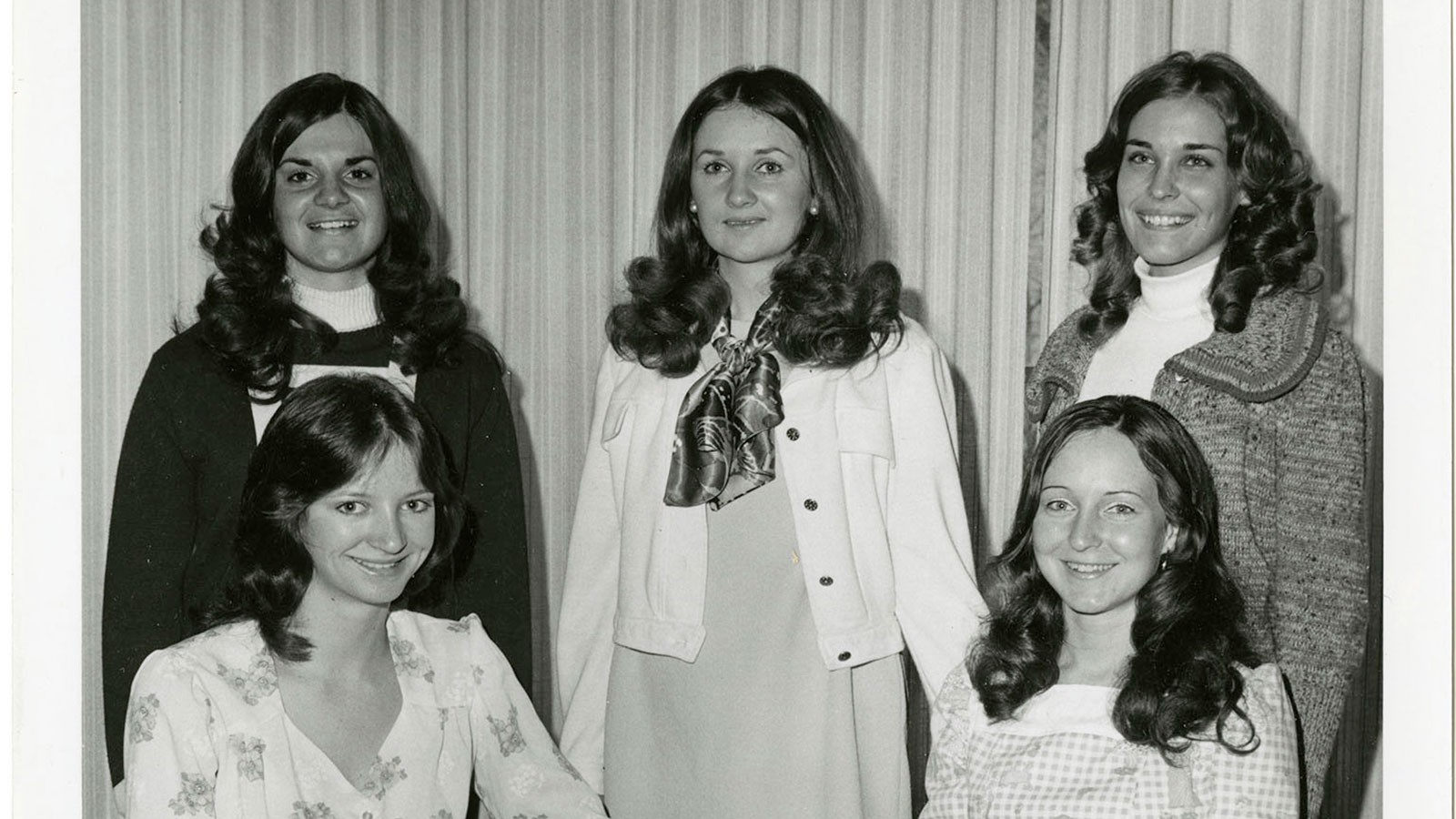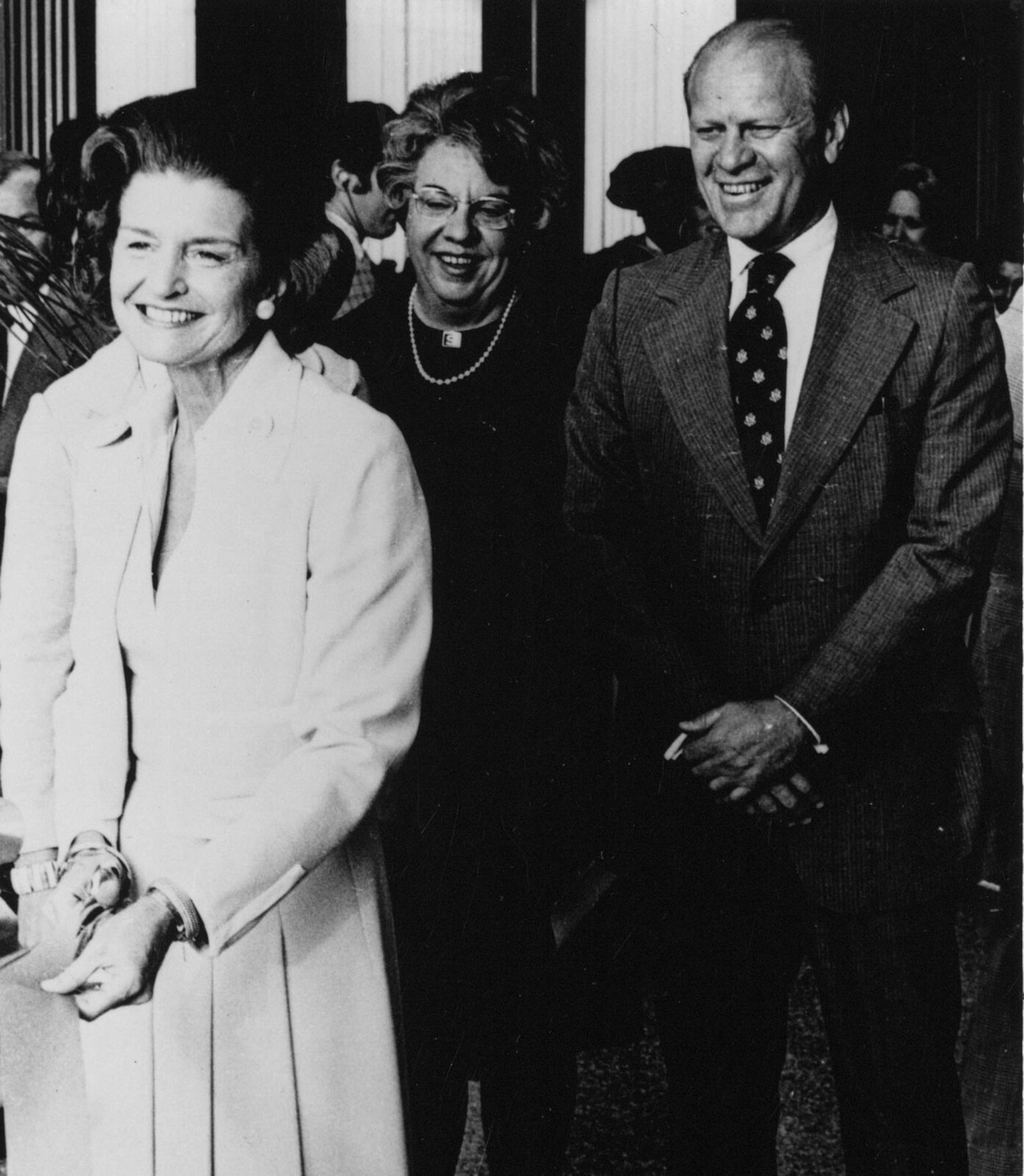Women of USU: Then and Now, First Women's Rights Convention and USU Women's Initiatives
By Alana Miller Manesse |
Peggy Menlove (Walker) (bottom left), president of the Associated Women Students, led a group in securing a location for the Women's Center for Life Long Learning in the Taggart Student Center in 1974.
Since its earliest days, women at Utah State University have had a huge impact on the cultural, scientific, economic, and social fabric of the institution. The Year of the Woman shares these critical voices simply because their stories matter.
Seneca Falls – The First Women’s Rights Convention (1848)
When Utah State University offered its first classes in 1890, both women and men enrolled, not the case at every college campus at the time. The foundation for women having access to education was laid by events that came earlier, such as the first women’s rights meeting, held in Seneca Falls, New York.
On July 19, 1848, not long after the annual celebration of the country’s Fourth of July, over 200 women gathered in Seneca Falls for the first women’s rights convention held in the United States. Organized by Elizabeth Cady Stanton, Lucretia Mott, and three other women, the convention was an opportunity to gather and discuss the social, civil, and religious rights of women.
The convention took place over the course of two days, with the first day exclusively for women, and the second day open to the general public.
Elizabeth Cady Stanton opened the first day of the convention with a speech on the goals and purpose of the gathering:
“We are assembled to protest against a form of government, existing without the consent of the governed—to declare our right to be free as man is free, to be represented in the government which we are taxed to support, to have such disgraceful laws as give man the power to chastise and imprison his wife, to take the wages which she earns, the property which she inherits, and, in case of separation, the children of her love.”
Later that morning, Stanton spoke again, this time reading a declaration that would be revised and signed over the course of the conference.
In the days prior to the convention, Elizabeth Cady Stanton drafted a manifesto to be presented at the convention – The Declaration of Sentiments and Grievances. Modeled after the Declaration of Independence, written in 1776, the Declaration of Sentiments called on women to fight for the rights that were denied them on the basis of their sex. Declaring “that all men and women are created equal,” the Declaration proceeded to list 11 resolutions of women’s rights.
Throughout the rest of the first day of the convention, the women revised and deliberated on the listed resolutions, with all but one passing unanimously – the ninth resolution, which demanded the right to vote. After a long debate, the resolution passed.
The next day, July 20, Stanton read the revised Declaration of Sentiments to a gathering now including men and women. Ridiculed for proclaiming the right to vote for women, the Seneca Falls Convention officially marked the beginning of the road toward women’s suffrage, a road women would travel for 70 years before finally achieving their goal. Along the path of freedom and the right to vote, various groups of people have been left out. On August 26, the centenary anniversary of the 19th Amendment will be recognized, and on August 6, the 55th anniversary of the Voting Rights Act of 1965 will be honored.
Women’s Initiatives at USU
As Utah State University has grown and evolved, so have the women’s organizations and programs that support students, staff, and faculty. Some of the most significant change took place in the 1970s. Instead of fighting for the vote, women fought for women’s liberation, equal pay in the workplace, more representation in politics, and increased freedom and autonomy over their individual lives.
A Committee on the Status of Women was formed in 1972, led by Carolyn Steel and including women leaders from the faculty and staff. The group helped write an Affirmative Action Plan and was instrumental in the hiring of the first woman in the Counseling Center, Marilynne Glatfelter. The committee published a quarterly newsletter to discuss changes occurring within the university community and the overall status of women at USU.
Also in 1972, the first Women’s Studies course was taught, without pay, by a team of faculty members, including the legendary Alison C. Thorne.
The committee also wanted a Women’s Center, particularly to serve the needs of non-traditional students. Students enlisted to help. Peggy Menlove (Walker), president of the Associated Women Students, led a group in securing a location for the center. She and others kept count of women using the third-floor women’s restroom in the Taggart Student Center. On June 8, 1974, after months of data collection and a remodel, the Women’s Center for Life Long Learning--what had been the women’s restroom--was dedicated by First Lady of the United States, Betty Ford with Helen Lundstrom as its inaugural director. Other early leaders included Anne Hatch and Dr. Janet Osborne, who instituted numerous programs over a long tenure as director.
In addition to the Women’s Center and Women’s Studies Program, the Women and Gender Research Institute (WGRI) was formed in 1984, and in 1995, the three programs federated as the “Tri Council.” Evolutions continued with the creation of one office, the Center for Women & Gender, established in 2004 with Dr. Ann Austin. Re-envisioned again 2019 to reflect changing needs, these programs have transitioned into the Center for Intersectional Gender Studies and Research with Dr. Christy Glass as interim director. This development acknowledges how race, class, gender, and other individual characteristics intersect with one another and overlap.
Today, social activists continue to draw strength and inspiration from the women of the past who dared to speak out against injustice and work toward change and reform.
For a more complete timeline on women’s programs and progress at Utah State University, visit the Year of the Woman timeline at http://www.usu.edu/year-of-the-woman/timeline.cfm#1975.
The Women's Center for Life Long Learning was dedicated by First Lady of the United States, Betty Ford (left, pictured with her husband, then U.S. President Gerald Ford) with Helen Lundstrom as its inaugural director.
WRITER
Alana Miller Manesse
Research Assistant
Year of the Woman
millatimea@gmail.com
CONTACT
Joyce Kinkead
Professor, Co-Chair
Department of English
435-797-1706
joyce.kinkead@usu.edu
TOPICS
Diversity & Inclusion 251stories Women 209stories History 138stories Year of the Woman 85storiesComments and questions regarding this article may be directed to the contact person listed on this page.









